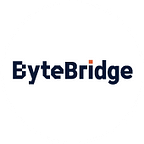Obstacle Detection Annotation Case Study
Computer vision is the branch of computer science that uses cameras or a set of cameras to process 2D visual data. This allows AI to identify cars, trucks, cyclists, pedestrians, roads, lane markers, traffic signals, buildings, and ground.
All autonomous vehicles use an array of hardware sensors to recognize the physical environment. Hardware sensors include a camera or set of cameras which is/are strategically placed around the vehicle body to capture data.
Compared with other artificial intelligence scenarios, driverless driving has more complex requirements for data annotation. Unmanned driving needs to face more complex scenarios. As it is necessary not only to plan the roadmap, but also to identify the road obstacles and face some unexpected situations, accurately labeled data is the key to unmanned driving technology.
Let’s take a look at a self-driving 2D image obstacle detection annotation case.
Basic Box Requirements
1 Labeling Range of the Box
- The minimum 2D box annotation size: 30*30 pixels and the precision level should be within 2 pixels
- All the obstacles need to be labeled, as long as they touch the road surface
2 Box Labeling
- In the case of occlusion, the occlusion part needs to be imagined, so that the box reflects the size of the real object, but don’t imagine its part outside the image
- It only needs to contain the body of the car. The open door, the open trunk, small parts of the car such as mirrors, overhead lights, antennas, and slender goods (such as poles) do not need to be labeled
3 Annotation for Pedestrians
- People riding bikes, car drivers
Only label the clearly visible part. People standing on freight cars and people on billboards need to be labeled separately, but those who do not touch the ground are labeled as omission.
- For people carrying things
People holding umbrellas, pulling suitcases, etc., only label their main body; For people taking a baby in their arms, label them together with one box; The person holding a child’s hand, label them separately.
- People sitting in wheelchairs
Only label the person, not the wheelchair. If a person is sitting in a stroller, only label the person, not the stroller.
4 Large Boxes Labeling
- Traffic divided blocks, water safety barriers, cones, and other pieces or distant inseparable (whether on the main road or outside the main road) are labeled with a large box, if the box is too large, it is ok to split it into several big boxes).
- Obstacles outside the road can be labeled with large boxes if they appear in groups, and those that appear clearly and visible alone can be labeled separately. Obstacles on the main road need to be labeled separately.
Box Attributes
2D images need to be annotated with three attributes: obstacle type, occlusion, and truncation.
1 Truncation Attributes
For truncated images, it is not necessary to imagine outside the image. Only label the part in the image.
2 Occlusion Attributes
Occluded by any object is considered occlusion, and the occluded parts should be labeled.
3 Occlusion is divided into three levels
- No occlusion: 0 to 20% occlusion
- Partial occlusion: 20% to 50% occlusion
- Severe occlusion: more than 50% occlusion
When the occlusion percentage is hard to judge with accuracy, choose a larger range first. For example, choose the occlusion of 20~50% first when it is hard to determine whether it is more than 20% or not.
4 When the occlusion is more than 80%, the object should still be labeled
5 Labelers should consider occlusion and truncation respectively
For truncated obstacles, if it is partially covered by other objects, the occlusion attribute is labeled according to the occlusion percentage of the visible area of the vehicle.
End
Outsource your data labeling tasks to ByteBridge, you can get high-quality ML training datasets cheaper and faster!
- Free Trial Without Credit Card: you can get your sample result in a fast turnaround, check the output, and give feedback directly to our project manager.
- 100% Human Validated
- Transparent & Standard Pricing: clear pricing is available(labor cost included)
